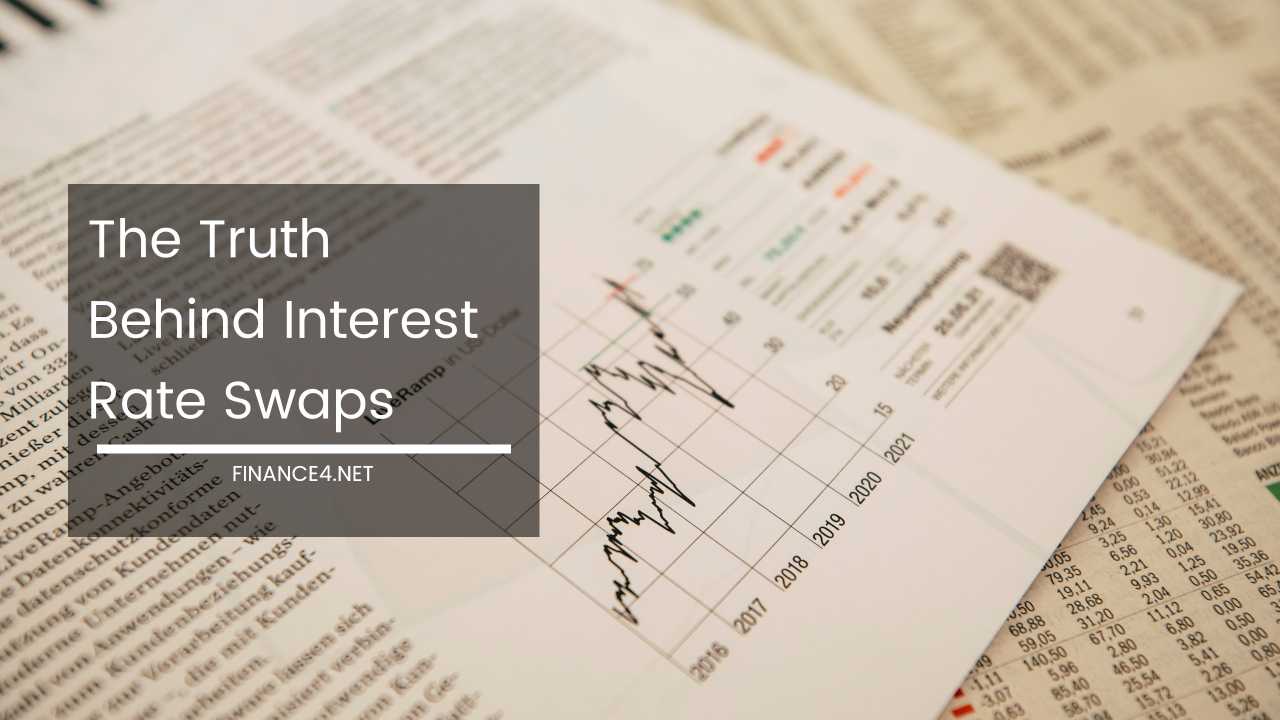The Truth Behind Interest Rate Swaps

The Truth Behind Interest Rate Swaps: Risk Management or Risky Business?
Interest rate swaps are the workhorses of the financial world, silently toiling behind the scenes to manage risk and optimize returns.
Yet, their complexity often casts a shroud of mystery. This article sheds light on these enigmatic instruments, delving into their purpose, benefits, potential pitfalls, and the evolving regulatory landscape.
Beyond the Basics: Unveiling the Swap Mechanism
Imagine Company A, which locked into a fixed-rate loan years ago. Now, interest rates have plummeted, leaving them stuck with a higher payment compared to the current market.
On the other hand, Company B might have a loan tied to a floating interest rate that’s currently skyrocketing. They crave the stability of a fixed rate.
This is where interest rate swaps come in. They are essentially customized contracts between two counterparties. One party agrees to exchange a stream of fixed interest payments for a stream of floating interest payments, and vice versa. It’s a way to mitigate exposure to the ever-fluctuating tides of interest rates.
Dissecting the Swap Anatomy: Fixed vs. Floating
Let’s delve deeper into the mechanics:
- Fixed Rate Leg: One party commits to paying a predetermined fixed interest rate for the swap’s duration. This rate is typically based on a reliable benchmark like government bonds.
- Floating Rate Leg: The other party agrees to pay a variable interest rate, often linked to a short-term benchmark like LIBOR (London Interbank Offered Rate). This rate adjusts periodically based on market conditions.
Beyond Hedging: Unveiling the Strategic Depths of Swaps
While hedging against interest rate fluctuations is a primary function, swaps offer a broader strategic toolkit:
- Interest Rate Speculation: Savvy market participants can use swaps to speculate on future interest rate movements. For instance, a company believing interest rates will fall can enter a swap to receive fixed payments and pay floating, potentially profiting if rates indeed decline.
- Arbitrage Opportunities: Market inefficiencies can create opportunities for arbitrage. Companies can exploit discrepancies between the fixed and floating rate markets to generate profits. However, this strategy requires significant expertise and carries high risk.
- Tailored Risk Management: Swaps can be customized to address specific risk profiles. For example, an interest rate cap swap allows a company to limit its exposure to rising rates by setting a maximum interest rate it would pay.
The Shadow Side: Unveiling the Risks of Swapping Strategies
While interest rate swaps offer a multitude of benefits, they are not without risks:
- Counterparty Risk: The most significant risk is the possibility of the other party defaulting on their swap obligations. This can lead to substantial financial losses. Central clearing of swaps through CCPs (Central Counterparty Clearinghouses) has mitigated this risk to some extent, but it’s not entirely eliminated.
- Market Risk: Adverse movements in interest rates can work against a swap strategy. For instance, a company locking in a fixed rate swap while interest rates fall would be stuck with a higher payment compared to the prevailing market rates. This is especially true for complex swaps with embedded optionalities.
- Basis Risk: Basis risk arises when the benchmark used for the floating leg deviates from the actual rate the company pays on its underlying loan. This mismatch can erode the intended benefits of the swap.
- Operational Risk: The complexity of swaps can lead to operational errors if not managed properly. Improper valuation, documentation errors, and inadequate communication can all lead to significant losses.
The User’s Guide: Navigating the Swap Landscape
Interest rate swaps are powerful tools, but just like any powerful tool, they require careful handling. Here’s what to remember:
- Clearly Define Your Needs: Before entering a swap agreement, clearly define your risk management goals. Are you looking to hedge existing exposure, speculate on interest rates, or achieve a specific asset-liability matching strategy?
- Seek Professional Guidance: Don’t be tempted to go it alone. Consult with qualified financial professionals who can assess your specific situation and recommend the most suitable swap strategy.
- Understand the Fine Print: Swaps are complex contracts with intricate details. Ensure you thoroughly understand all the terms and conditions before signing on the dotted line.
- Monitor the Market: The financial world is dynamic. Continuously monitor interest rate movements and adjust your strategy as needed.
The Evolving Landscape: Transparency and Regulation
The 2008 financial crisis exposed the potential dangers of unregulated derivatives like swaps. Opaque transactions and excessive leverage contributed to the crisis. In response, regulators have implemented reforms to increase transparency and mitigate risks. These include:
- Mandatory Reporting: Swap transactions must now be reported to central repositories, providing regulators with a clearer picture of swap activity in the market.
- Central Counterparty Clearing (CCP) Clearing: Many swaps are now cleared through CCPs, which act as intermediaries between the two counterparties. This reduces counterparty risk by ensuring the swap obligations are met even if one party defaults.
- Standardized Documentation: Standardized documentation for swaps has been introduced to reduce ambiguity and improve communication between counterparties.
Beyond Regulation: The Future of Swaps
Looking ahead, interest rate swaps are likely to remain a crucial tool in the financial landscape. Technological advancements like big data and machine learning offer exciting possibilities for improved swap valuation and risk management.
As the financial system evolves, regulations may continue to adapt to ensure these instruments are used responsibly and transparently. Here are some potential future trends:
- Increased Use of Technology: Big data analytics and machine learning can be leveraged to enhance swap valuation, risk assessment, and scenario modeling. This can lead to more efficient and effective swap strategies.
- Focus on Customization: The development of even more customized swaps could cater to a wider range of risk profiles and investment objectives.
- Heightened Regulatory Scrutiny: Regulators may continue to refine regulations to address emerging risks and promote responsible use of swaps.
The Final Word: A Calculated Choice, Not a Gamble
Interest rate swaps are valuable tools for managing risk and potentially generating profits. However, they are not a magic bullet, and their complexity necessitates careful consideration.
By understanding the mechanics, benefits, and pitfalls of swaps, companies can make informed decisions about whether they are the right tool for their financial strategy.
Used diligently with professional guidance, interest rate swaps can be a powerful force for navigating the ever-changing world of interest rates.



